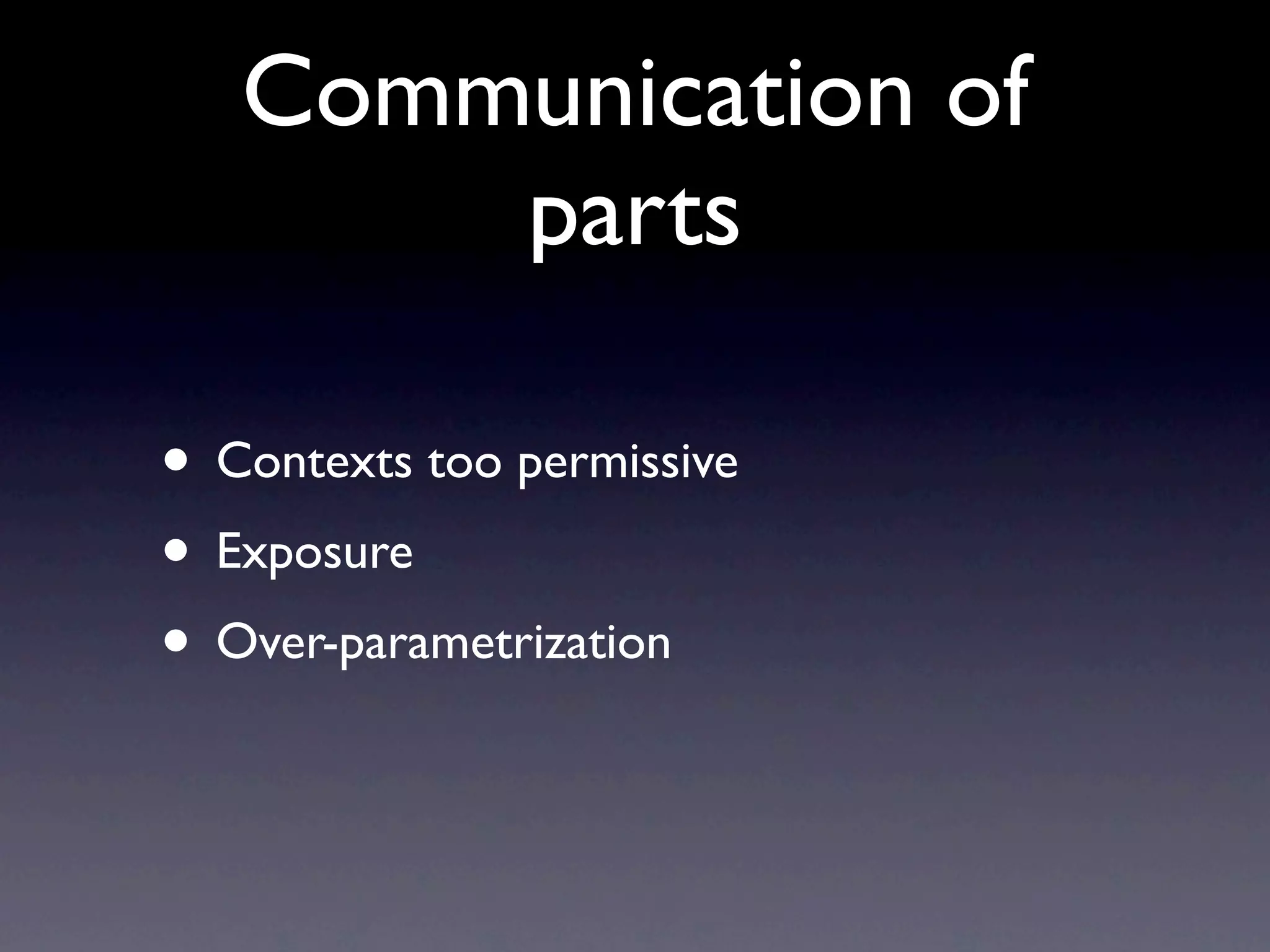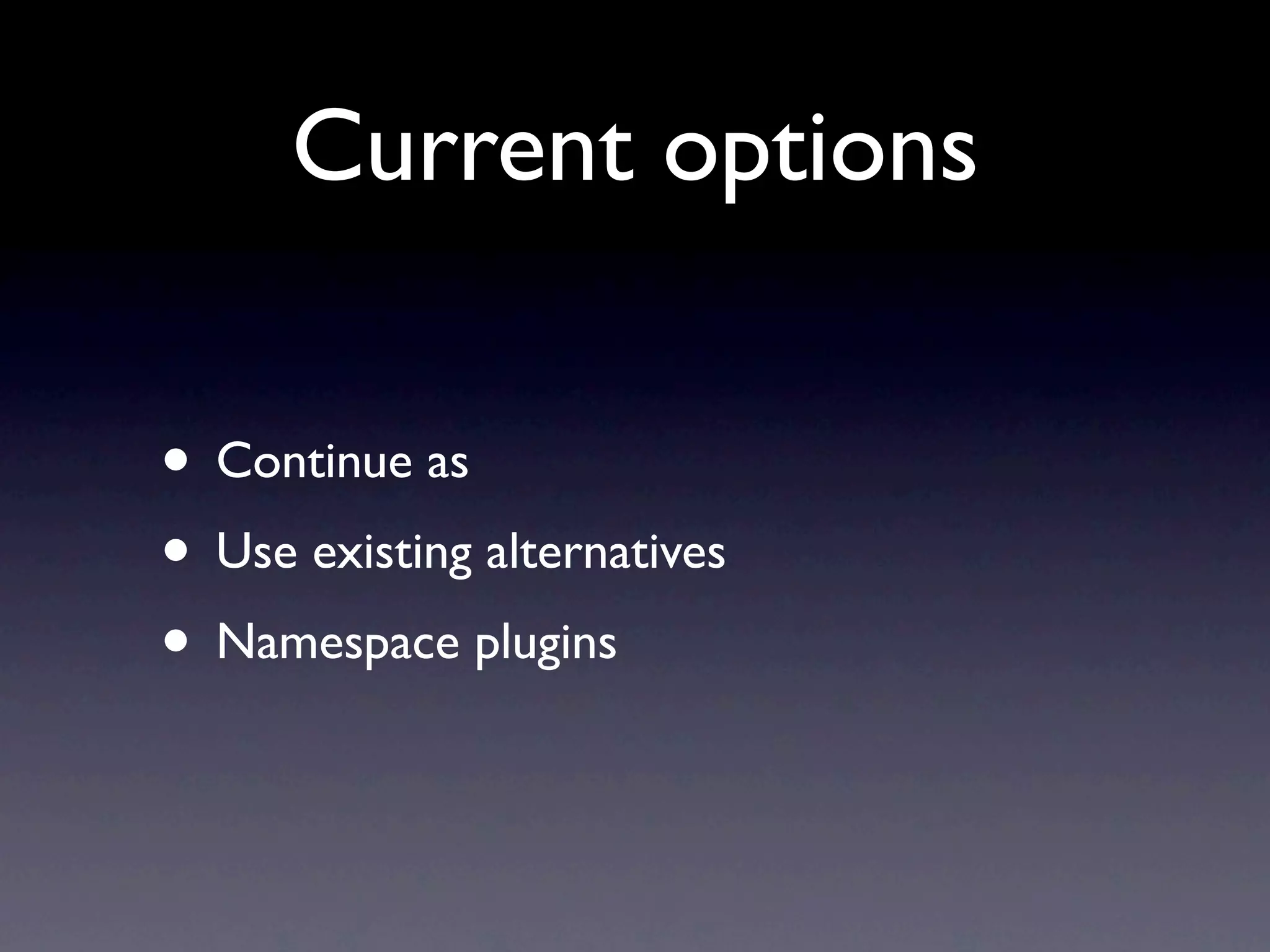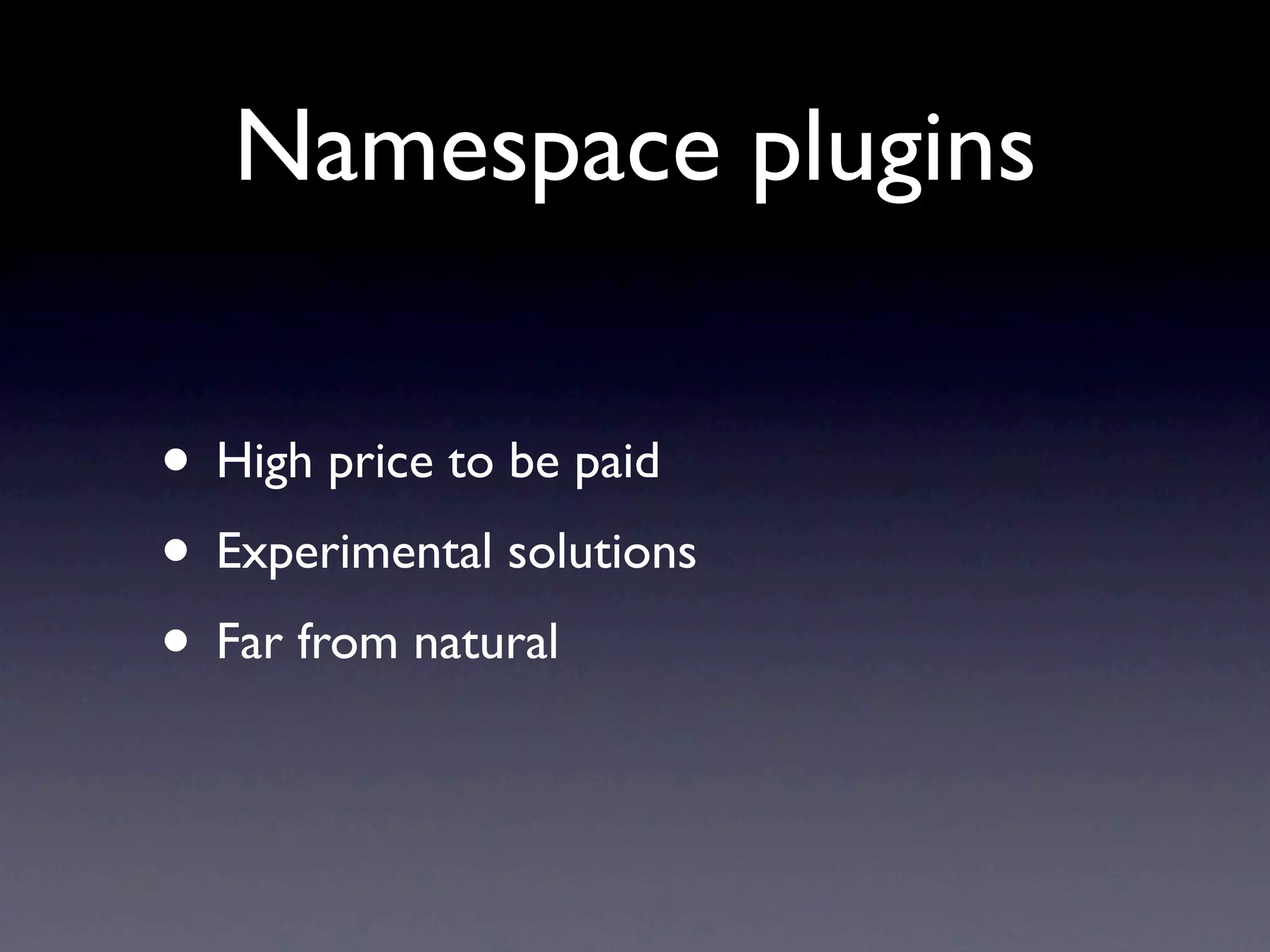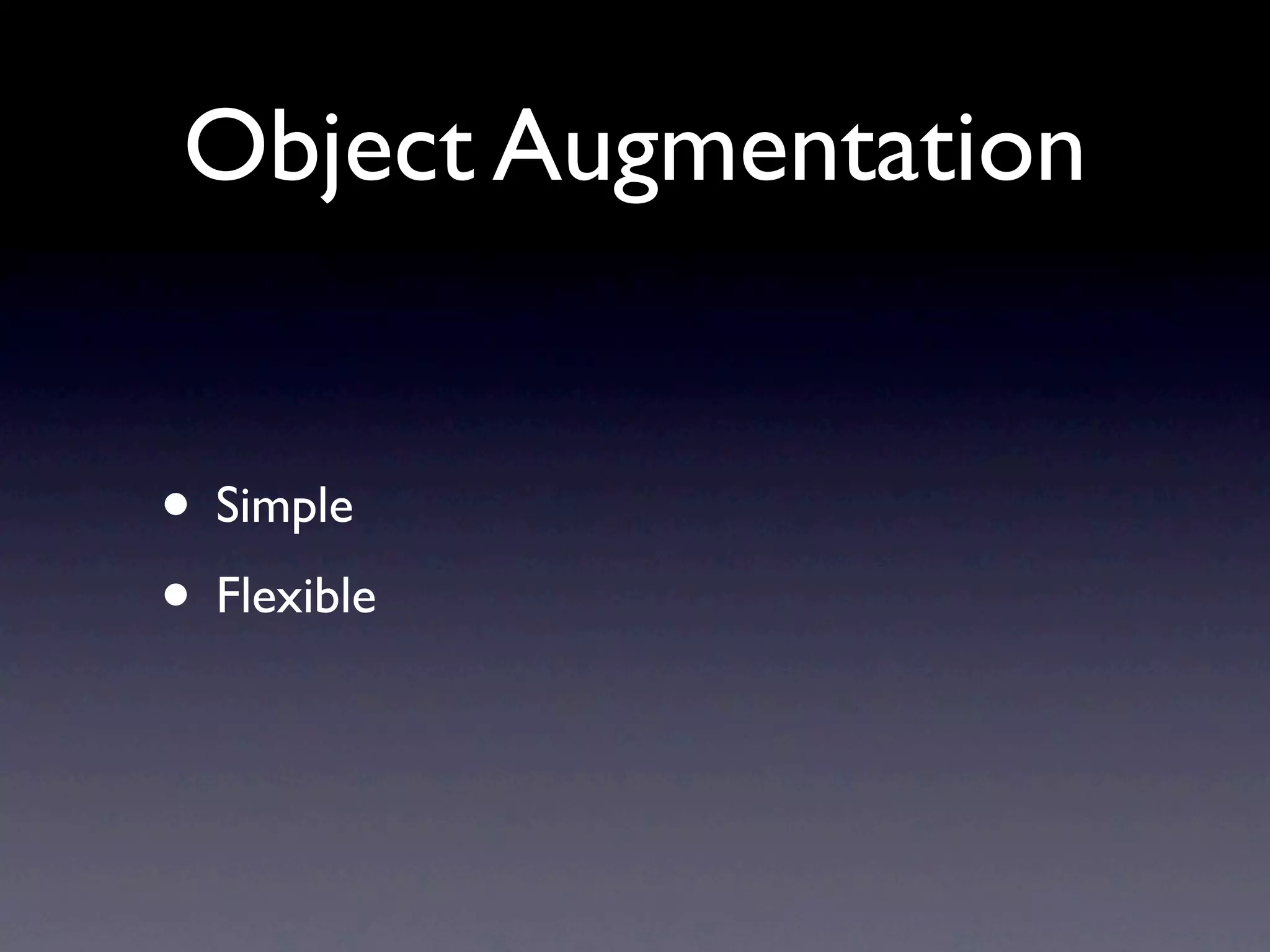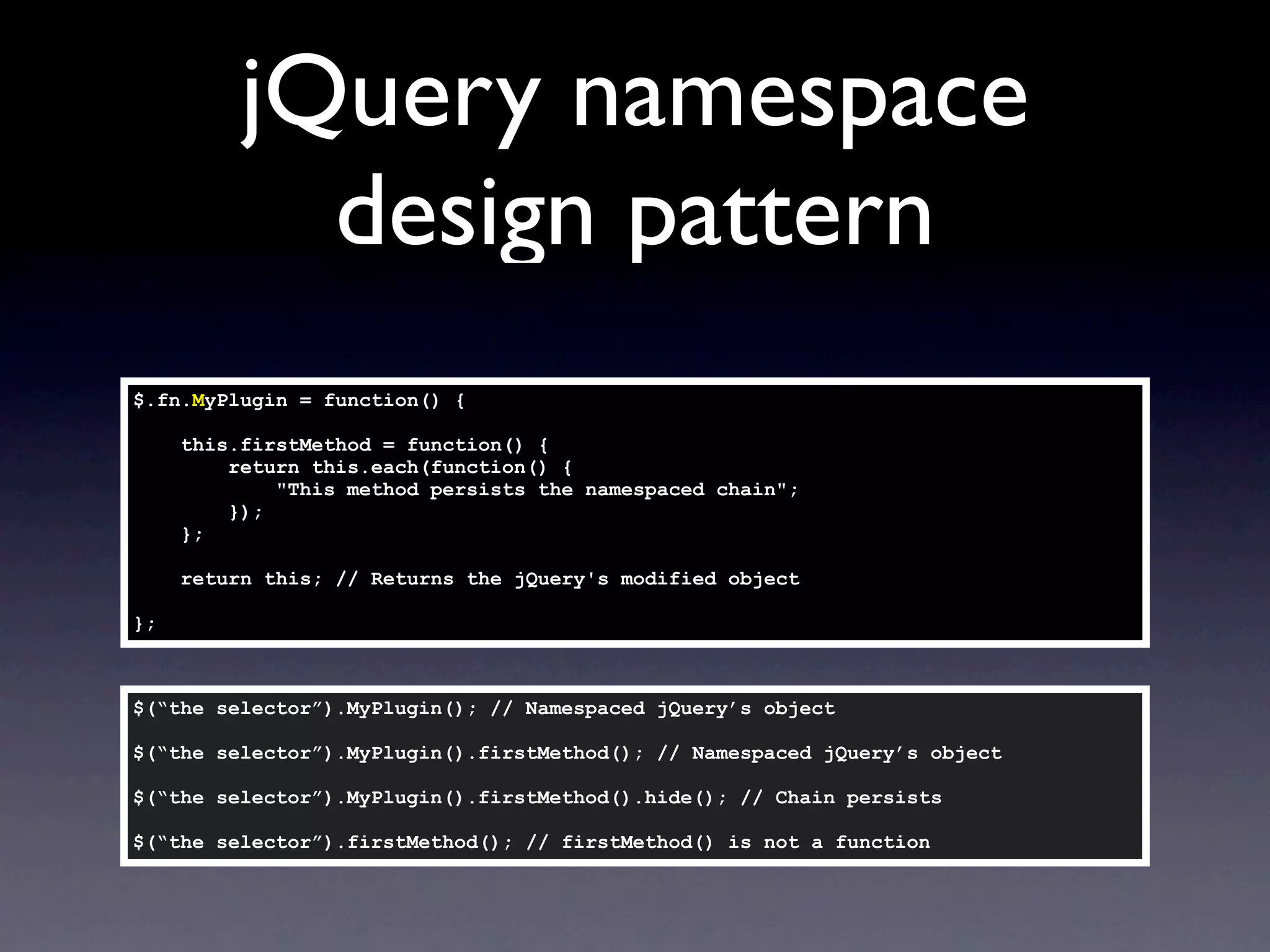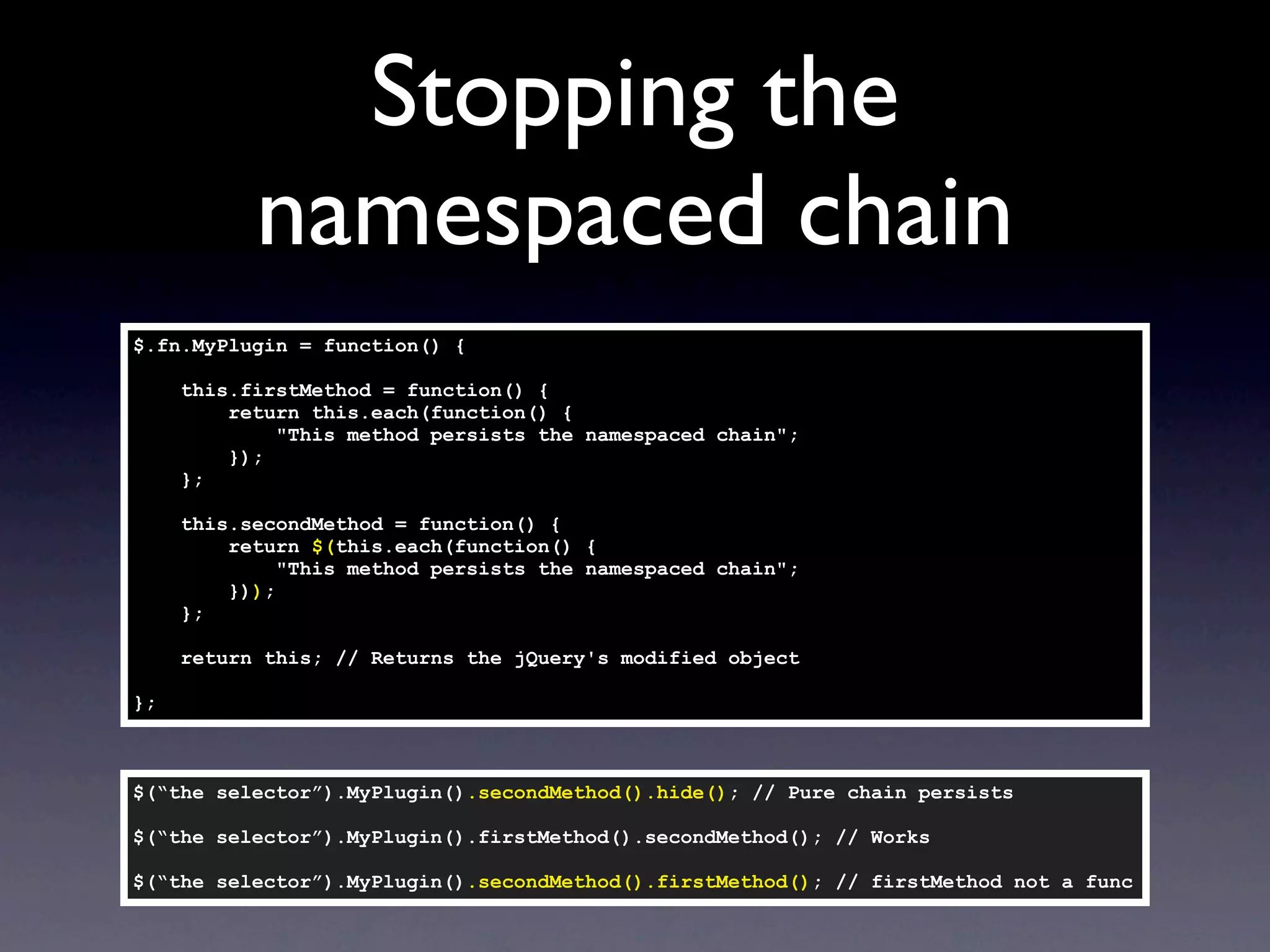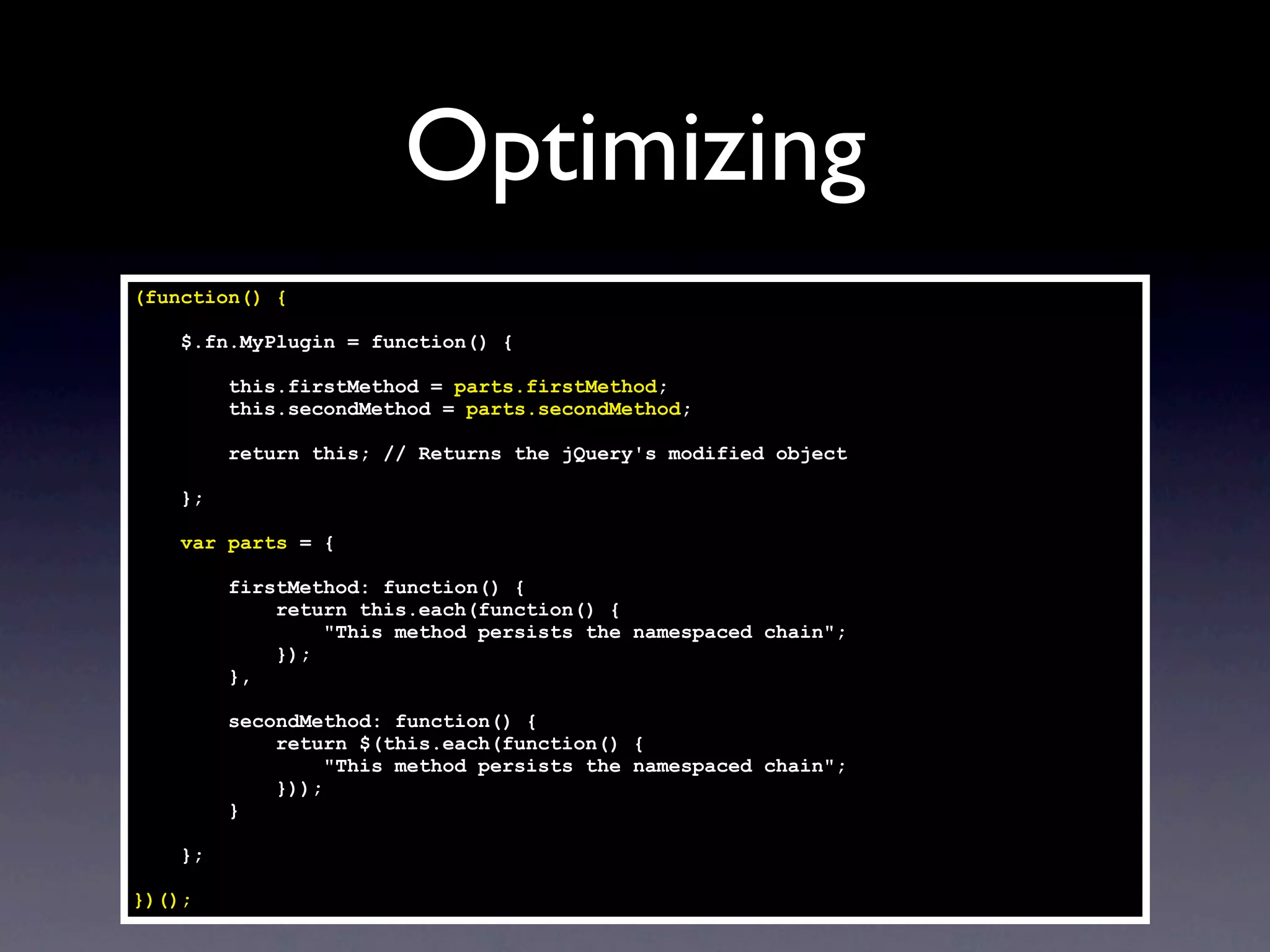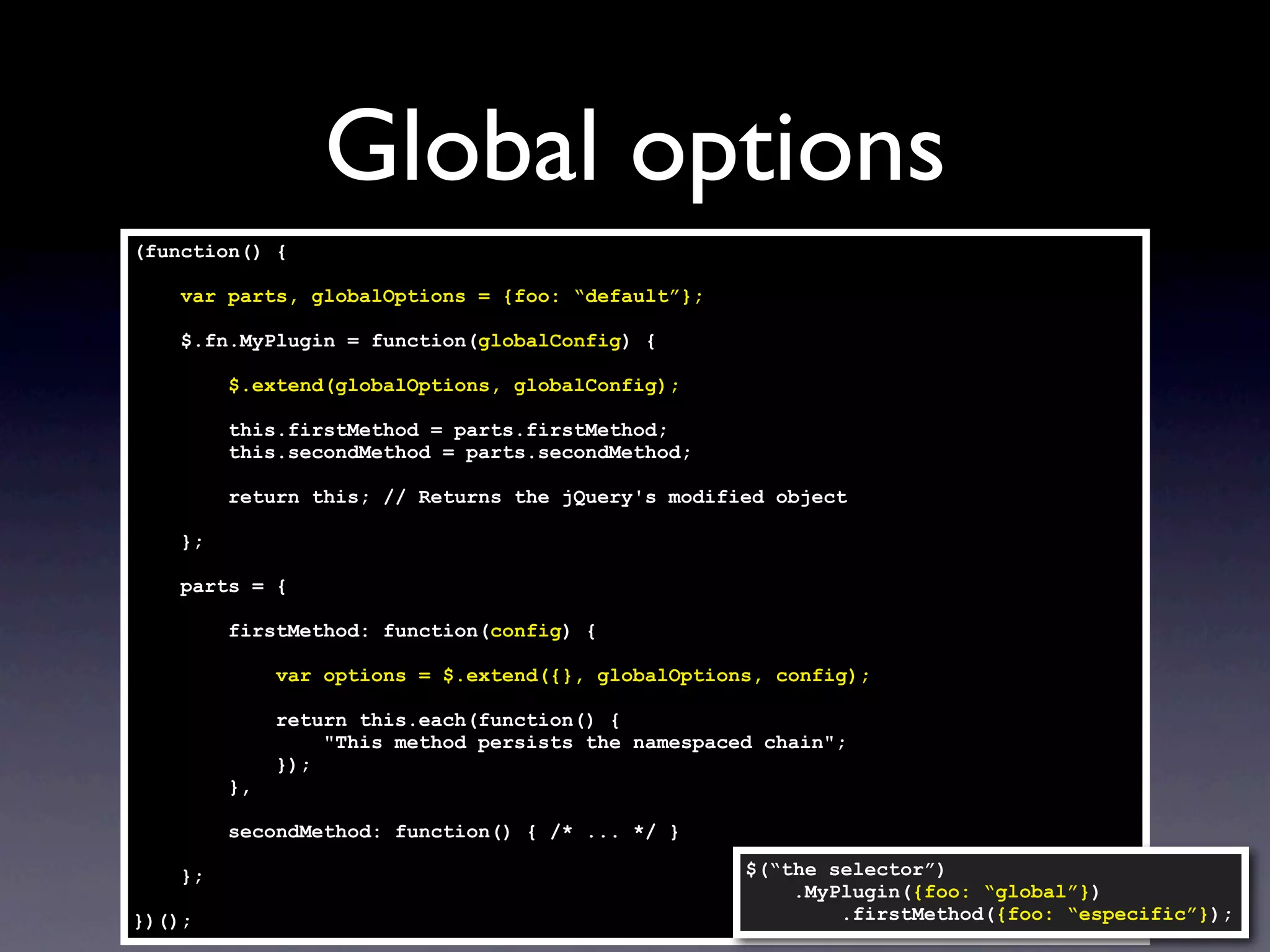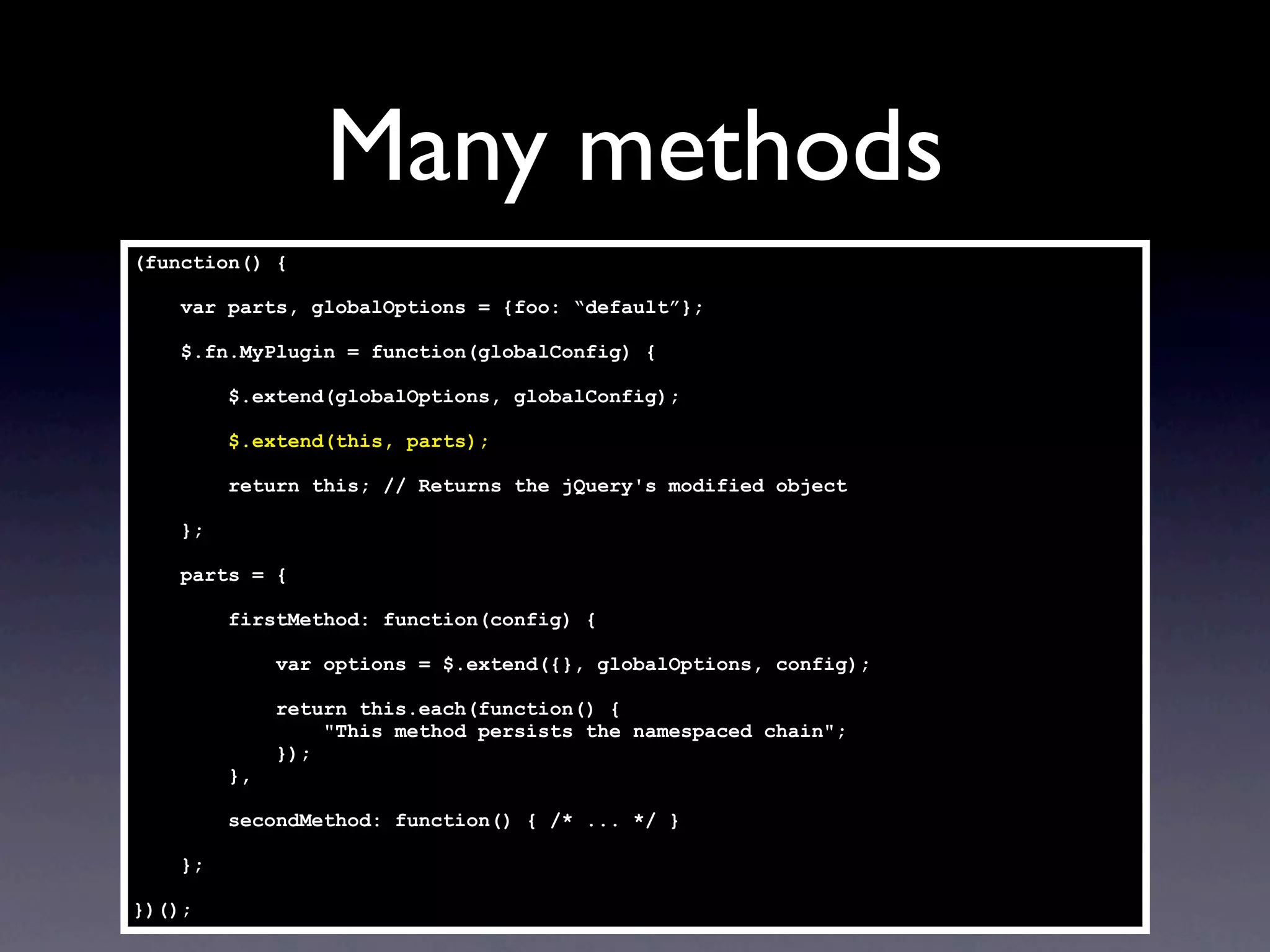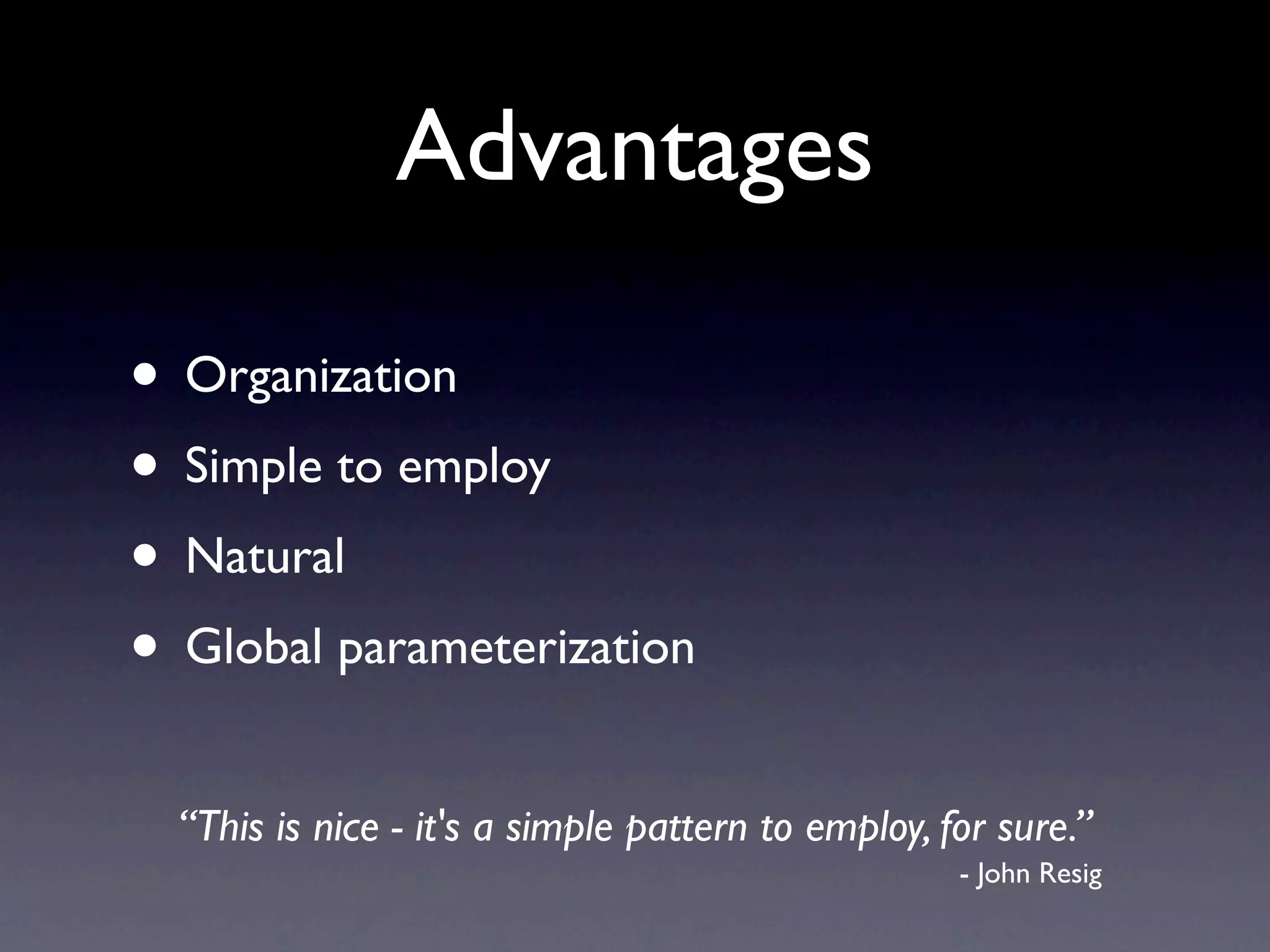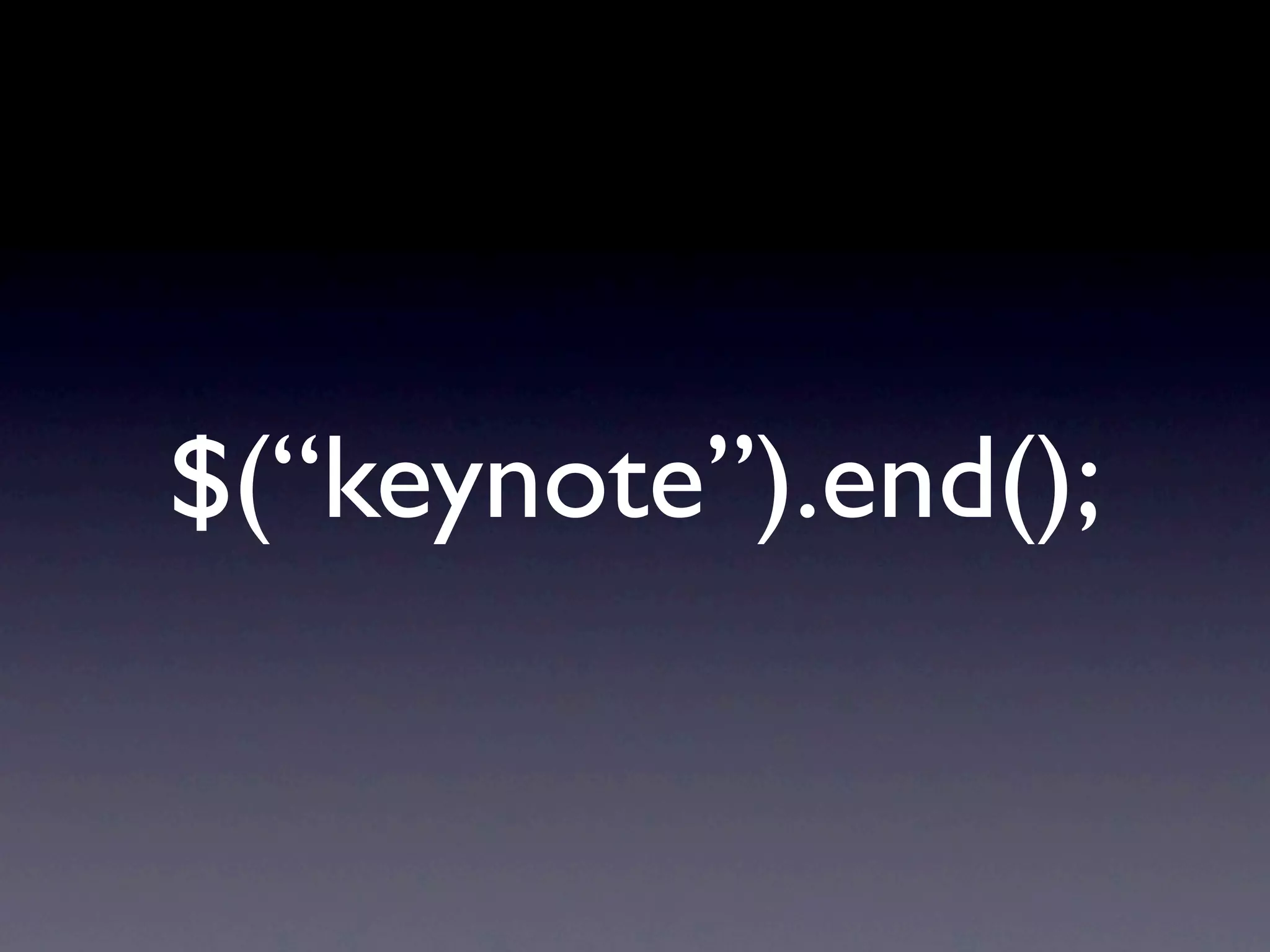The document discusses a namespace design pattern for jQuery plugins, addressing issues such as name conflicts, organization, and communication among plugin components. It presents various techniques for creating namespaced jQuery functions to avoid global scope contamination and improve code structure. The author emphasizes advantages like organization and simplicity in employing this design pattern.
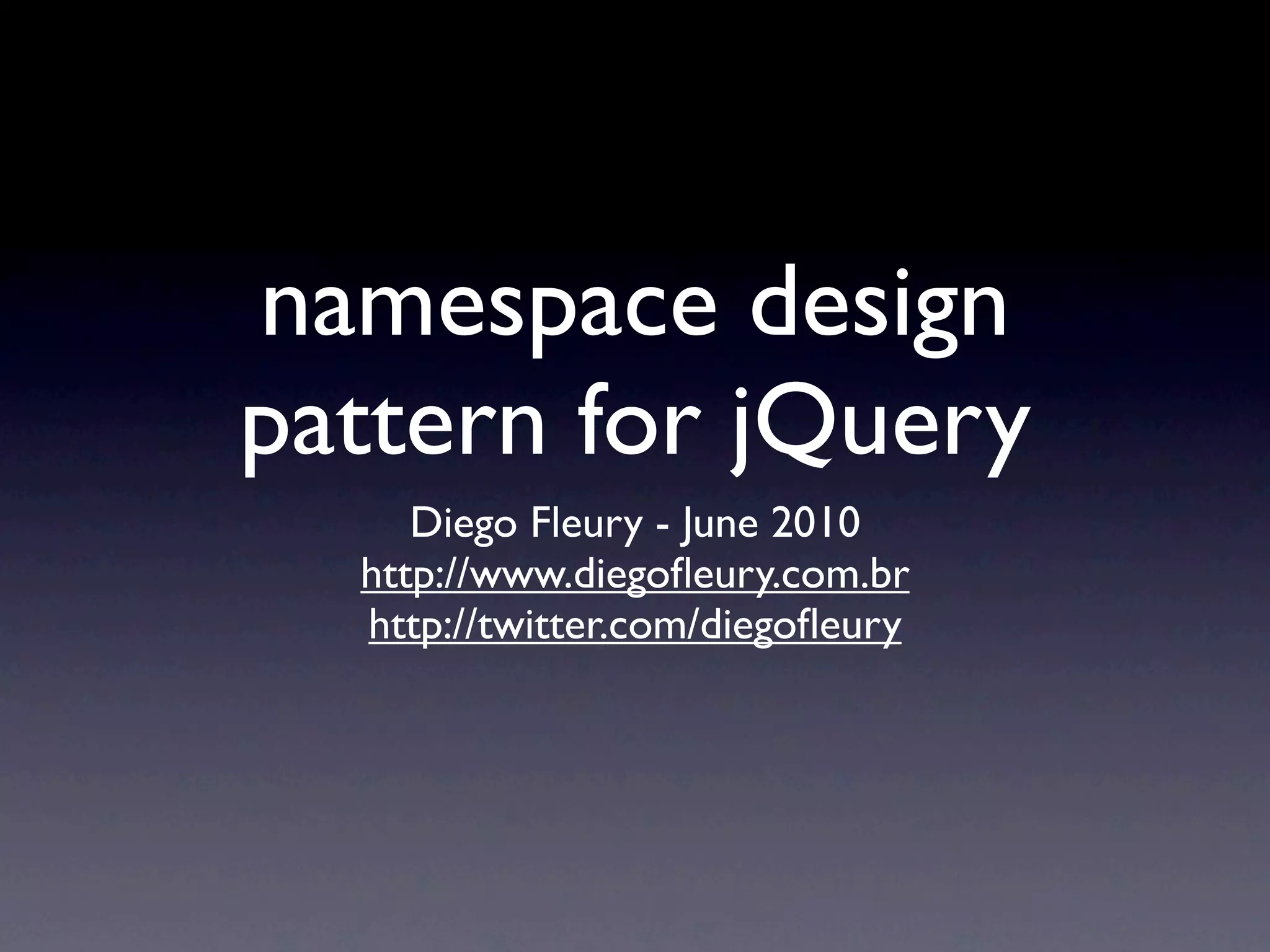
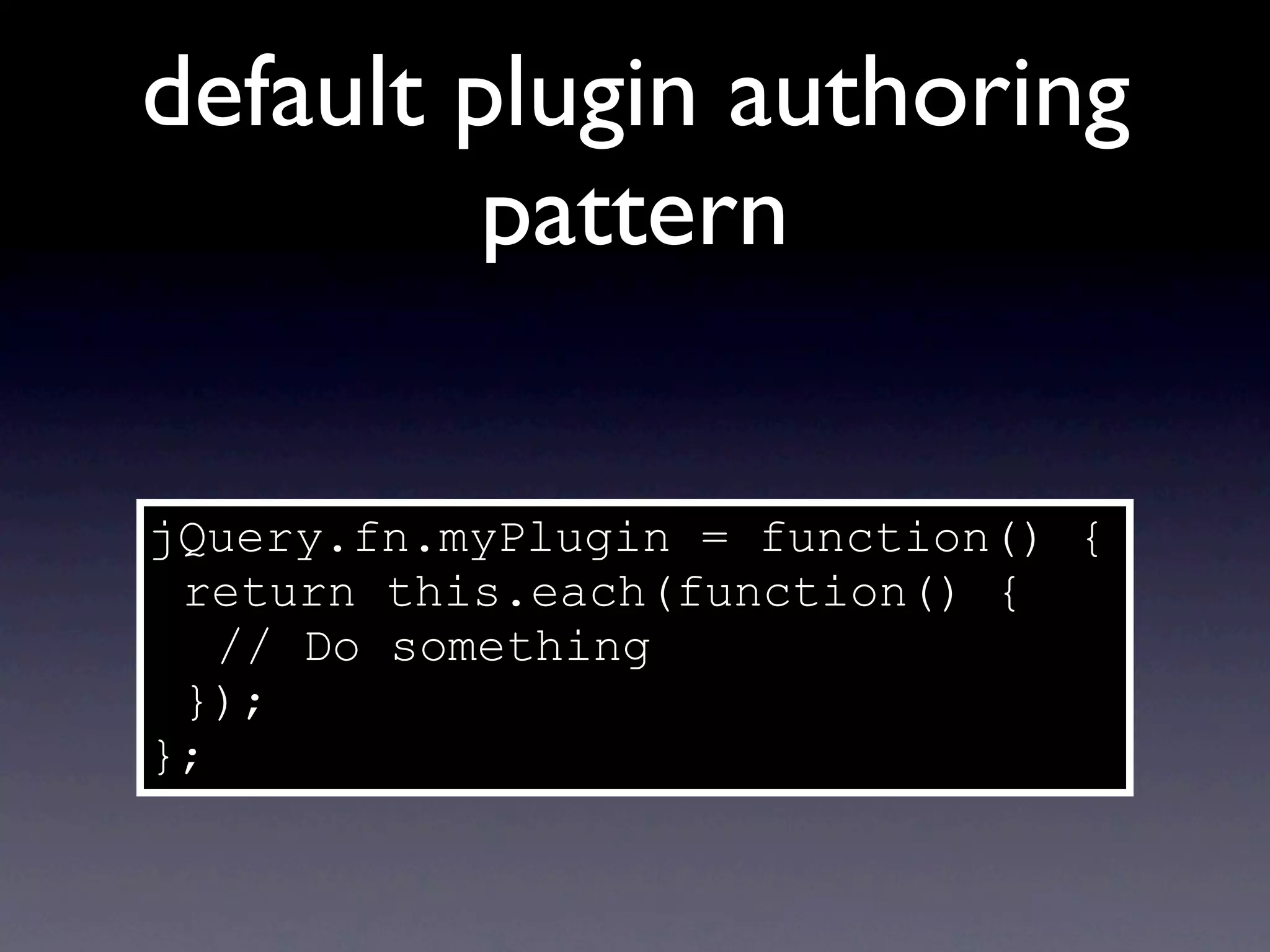
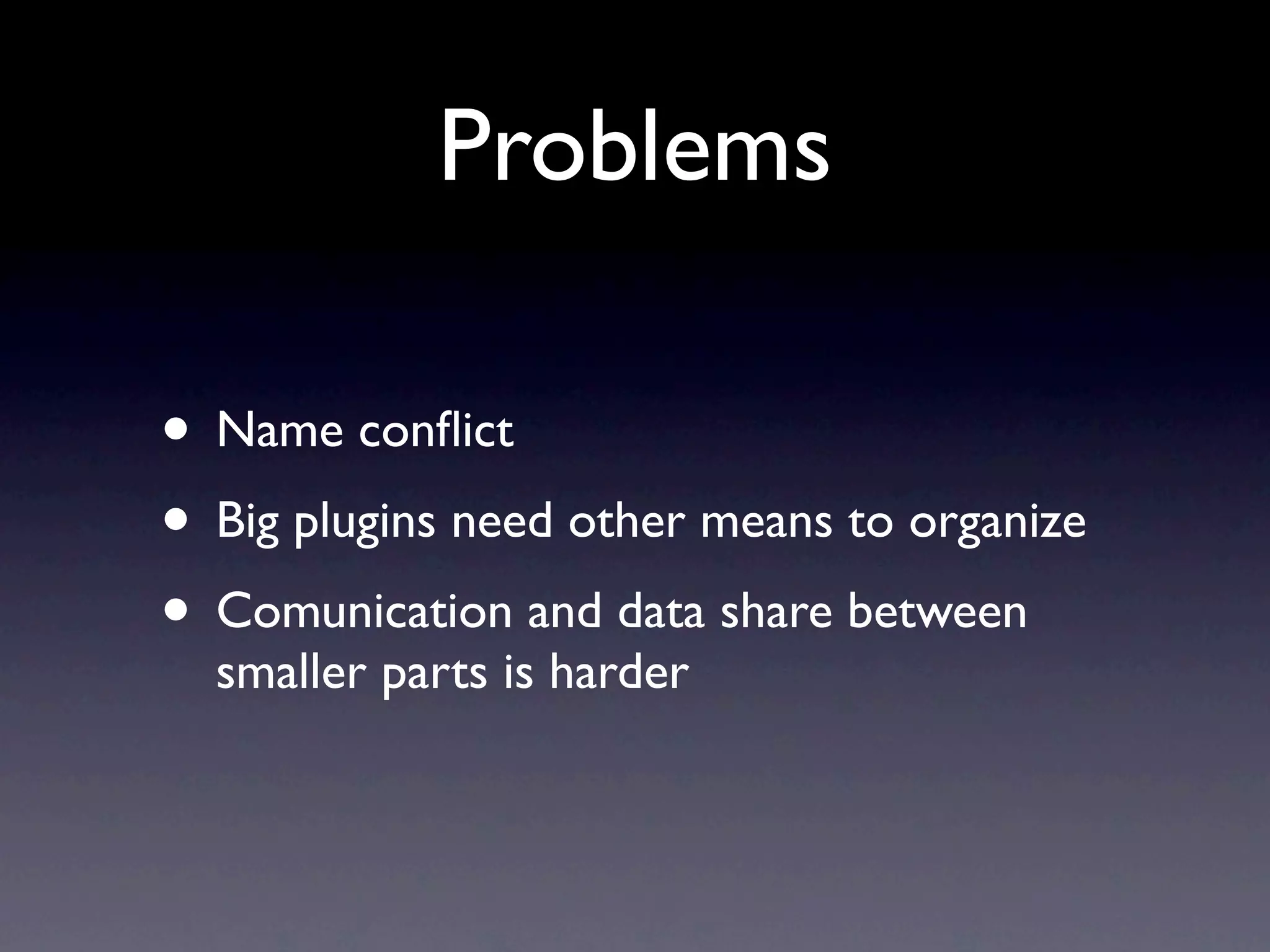
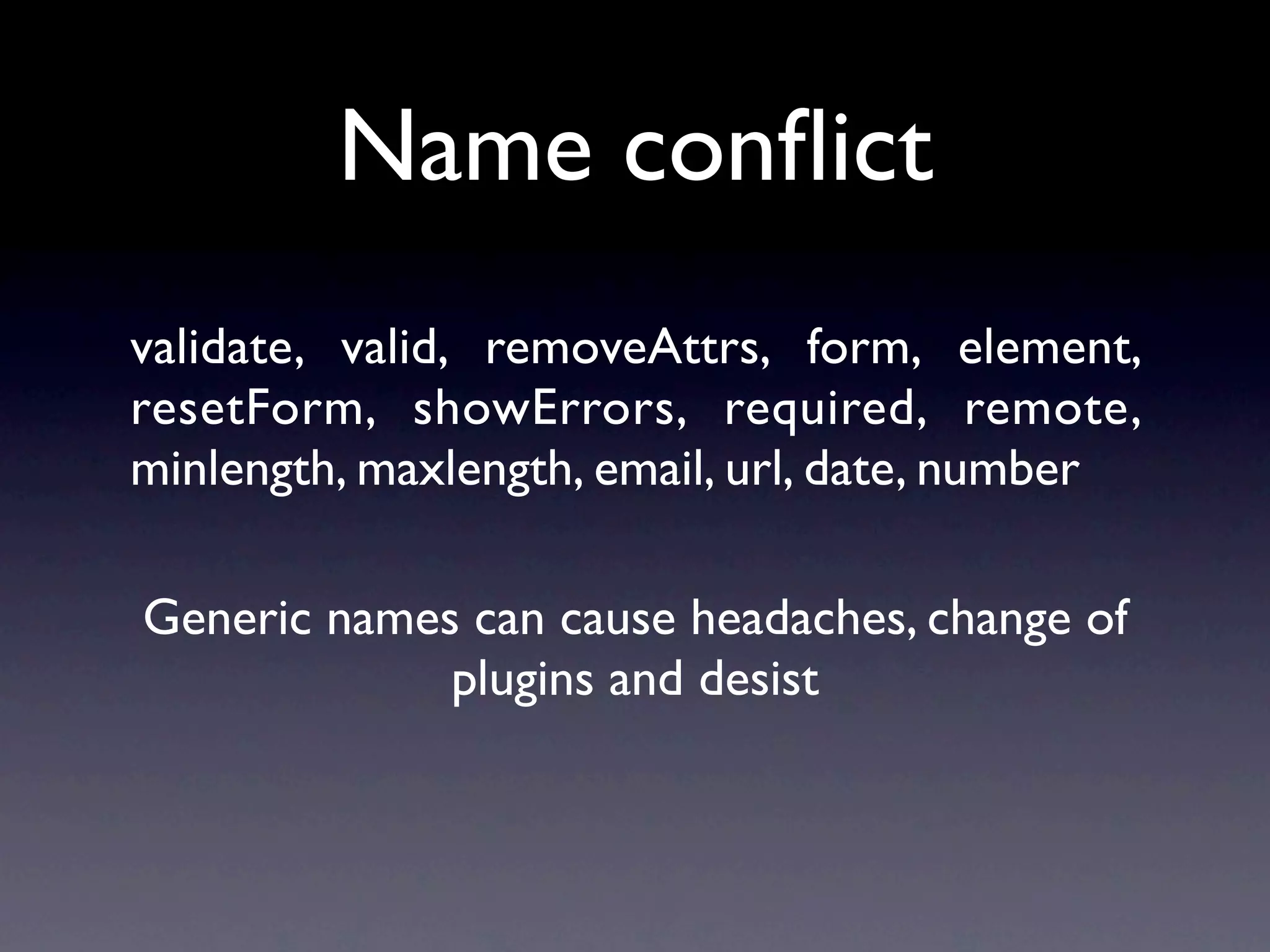
![plugins grandes
• Bigger plugins must be sliced into parts
• Alternatively as in jQuery UI
$(“foo”).bar(“myAction”, “myArgument”);
• Event-driven programming
$(“foo”).trigger(“myAction”, [“myArgument”]);](https://image.slidesharecdn.com/jquery-namespace-pattern-en-100613215521-phpapp01/75/jQuery-Namespace-Pattern-5-2048.jpg)
